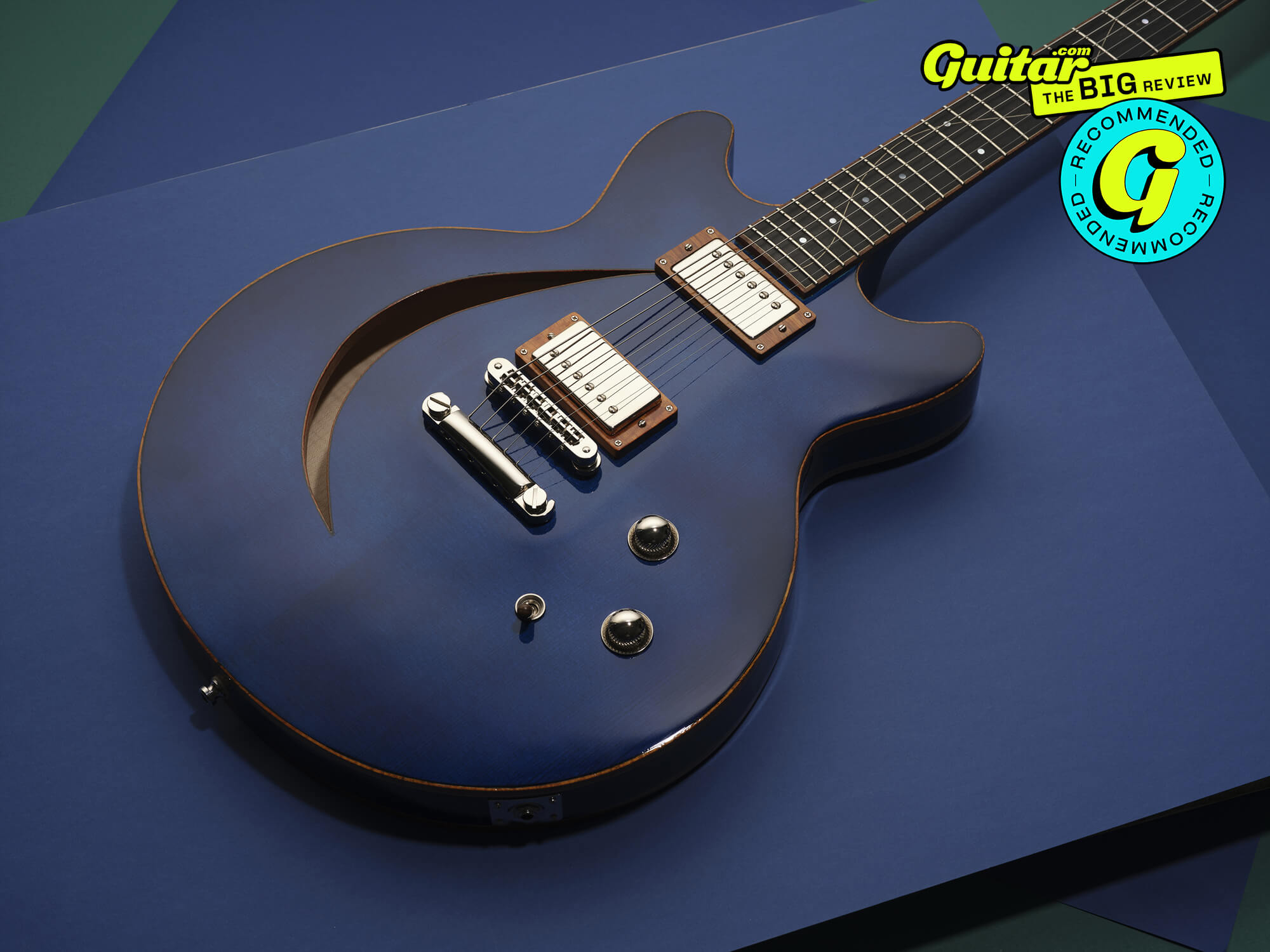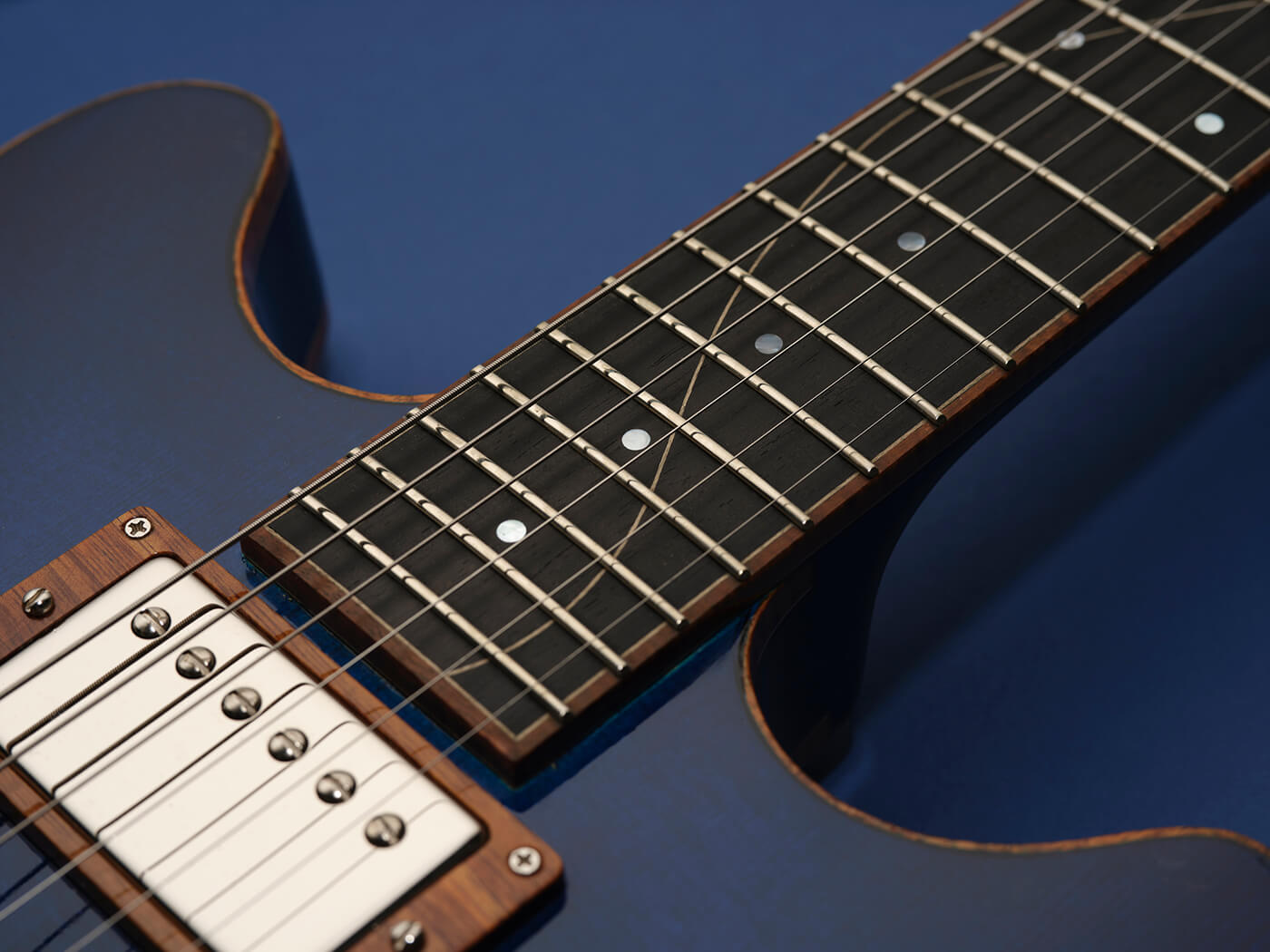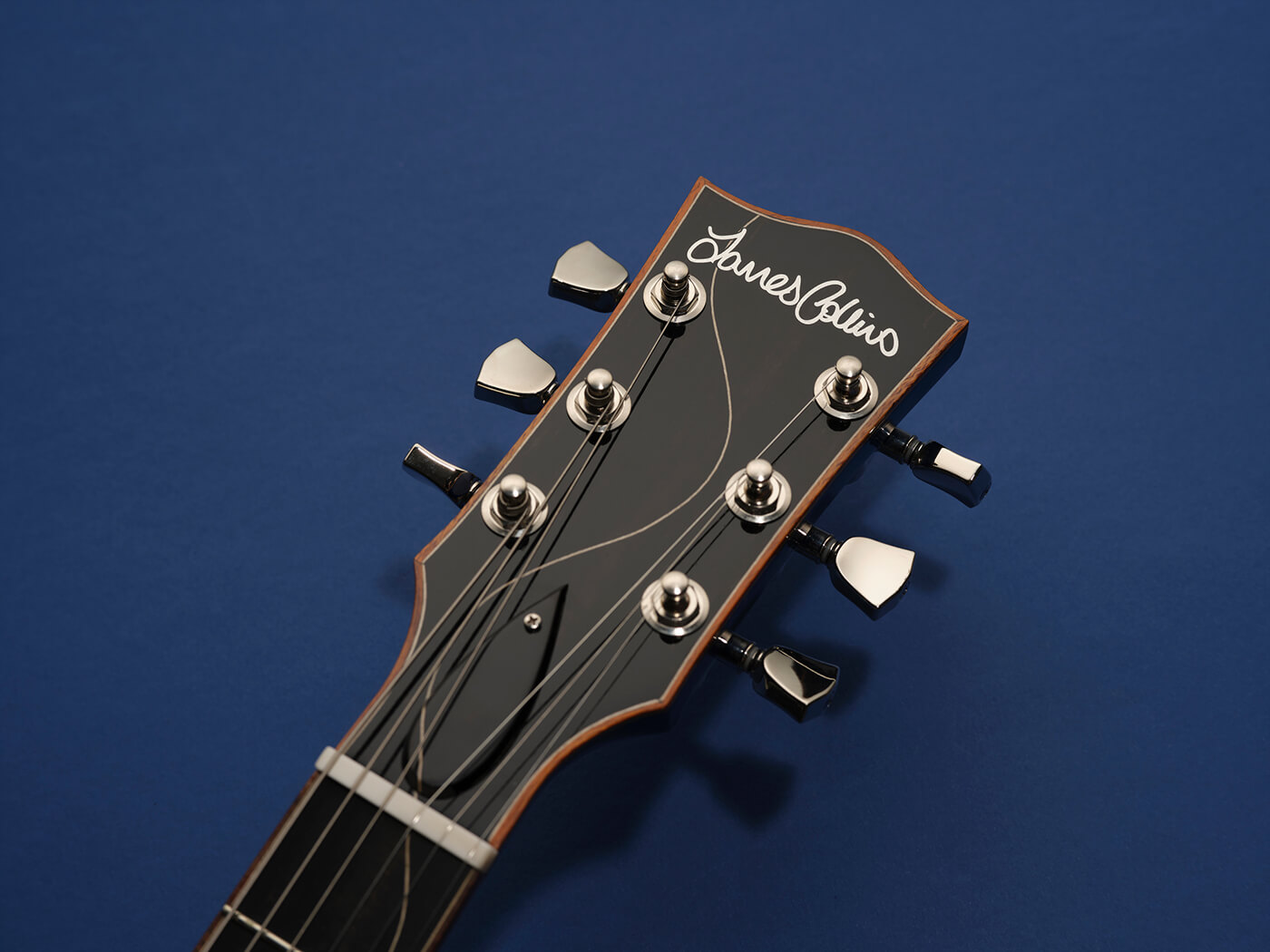Related Tags
James Collins Sapphire Signature GTO – a eye-catching hollowbody guitar that showcases some of the best of boutique British luthiery
This high-priced but extremely high-end electric might look like an ES, but a closer inspection reveals a truly different and unique hollowbodied instrument – and not just because of the soundhole.

Image: Adam Gasson for Guitar.com
Review Overview
Our rating
9
Our verdict
From £4,999, jamescollinsguitars.com
Although the history of the electric guitar is a story of mass production, there is a global community of luthiers who specialise in individual instruments made by hand. One of these is James Collins – a graduate of the prestigious Galloup School of Guitar Building and Repair – who builds a selection of solid and semi-hollow electric instruments from his workshop in East Sussex UK. This deep blue Sapphire Signature GTO model being a prime example of his top-of-the-range offering.
How is this different from other ES-style guitars?
A double-cutaway ES-style guitar with a dramatic swept crescent F-hole on the bass side, the GTO Sapphire is not your average Gibson clone. Yes, you have a 24.75” scale and a pair of humbuckers (more of which later) but the construction is very different.
The body is made of book-matched flamed maple (not laminate) and what appears at first glance to be a spruce centre block is in fact an integral part of the hollowed-out body and instead of the traditional bent maple top seen on Gibsons and Gretsches for decades, we have a hand-carved soundboard of European spruce. This takes us firmly into real Gibson/D’Aquisto archtop territory. Very interesting.
This cobalt blue instrument was built in tribute to the legendary archtop guitar luthier Steve Grimes – in particular the Jazz Laureate that Grimes created as part of the much-vaunted Blue Guitar Collection commissioned by the late super collector Scott Chinery in the 1990s and now under the stewardship of The Archtop Foundation USA.
As such the whole instrument is finished in deep blue nitrocellulose (not the legendarily volatile Mohawk lacquer no. 520-4146 that ennobled all but one of the 22 guitars Chinery commissioned) and the hand-made binding, switch tip and pickup surrounds are curly Hawaiian Koa as a further tribute to the beautiful island of Maui where Grimes makes his masterpieces.

The glued-on neck is also made from flamed maple – there’s a natural finish stringer of flamed maple running the whole length of the guitar which culminates in an inset laser-engraved coin on the back of the headstock with the instrument’s serial number. You don’t see that every day.
There’s an ebony fretboard with a delicate maple sound wave inlay and mother-of-pearl microdot position markers in between the medium frets. Intriguingly the neck joins the body at the 18th fret rather than the 16th.
The hardware is all high quality, from the nickel Grover machine heads to the Tone Pros bridge. The controls are a simplified arrangement of single volume and tone controls – these have been carefully recessed into the body of the instrument. It’s a sophisticated approach.

Flipping the blue beast over gives me a chance to admire the flamed maple control cavity cover which is perfectly cut from the back. This is a nice touch, and well executed. It’s almost a pity that it hides the elegant wiring from view.
Although Collins will fit any pickup that a client prefers, this guitar features a pair of custom humbuckers wound in-house. This guitar is straight – no chaser, but coil taps and other wiring options are available. It’s time to plug in.
How Does The James Collins GTO Sound?
Plugging into an old Cornford Hurricane for a family friendly good time I get immediate results. Part ES-355, part L5, it’s the sort of vocal and articulate lead voice that is the holy grail for the modern jazz/blues player. Anything from Larry Carlton to Robben Ford and Jocelyn Gould – this guitar covers a lot of ground on the neck pickup alone.
The in-between sound has more bite to it than the average ES model. It may have a little too much chunk for the funk but a compressor will push it through the mix nicely. If you want to go properly spindly you can always arrange a coil-tap with James himself.
The bridge humbucker takes us straight to soul/R&B territory. Think David T. Walker, Cornell Dupree and Eric Gale (not Gales – though he’d probably dig this too). It’s particularly delicious with a slice of wah-wah pedal as you ease into those expensive chords. There’s a lot of sustain on tap here too. The whole instrument seems pent up and ready to deliver.

Speaking of which – even though the Collins GTO is intended as a sophisticated clean sound machine so was the Les Paul and look what happened there. With this in mind I subject the GTO to a line of dirt boxes including a Vemuram Jan Ray, a Crowther Hot Cake and a Bigfoot Engineering King Fuzz.
Most players will probably stop at a gentle overdriven clip but it’s good to know that this guitar will rise to the moment if you decide to evil it with some fuzz. Does it feel wrong? A little – but in a good way. The results are an eye-opening good time.
That rich and sophisticated voice translates into a full overdriven sound packed with delicious overtones. Individual notes jump out of cluster chords like an acoustic guitar and it’s such a joy to hear sustained ideas spiralling off into life-affirming harmonic feedback, controllable by the player’s fingers alone.
One thing that makes an immediate impression is the fact that although the guitar feels superbly slinky the strings feel thicker. Yep, it’s strung with 11s but the playability remains excellent throughout – even the stylistically controversial “boomer bends” can be executed without leaning in too hard.

As the absolute top of the James Collins range – the Sapphire Signature GTO involves a huge amount of work and the thought-provoking price tag is indicative of this fact. Every aspect of this guitar, from the woods used (cocobolo, walnut and even ebony are among the myriad options available for the soundboard) to the hardware – including hand-buffed curly Koa pickup surrounds – can be customised to the owner’s needs.
We truly are living in a golden age of guitar luthiery and the James Collins Sapphire Signature GTO is a prime example.
James Collins GTO Alternatives
There’s an argument to be made that when you’re shopping at this sort of rarefied level, you probably know exactly what you want already, but if you’re still on the fence, there’s a lot to love about Gibson Custom’s 1958 ES-335 (£6,999) or the similarly vibed Collings I-35 Vintage Aged Cherry (£7,999). If you’d rather stick with a European luthier, then the Nik Huber Orca 59 (£8,999) is a monster guitar.
